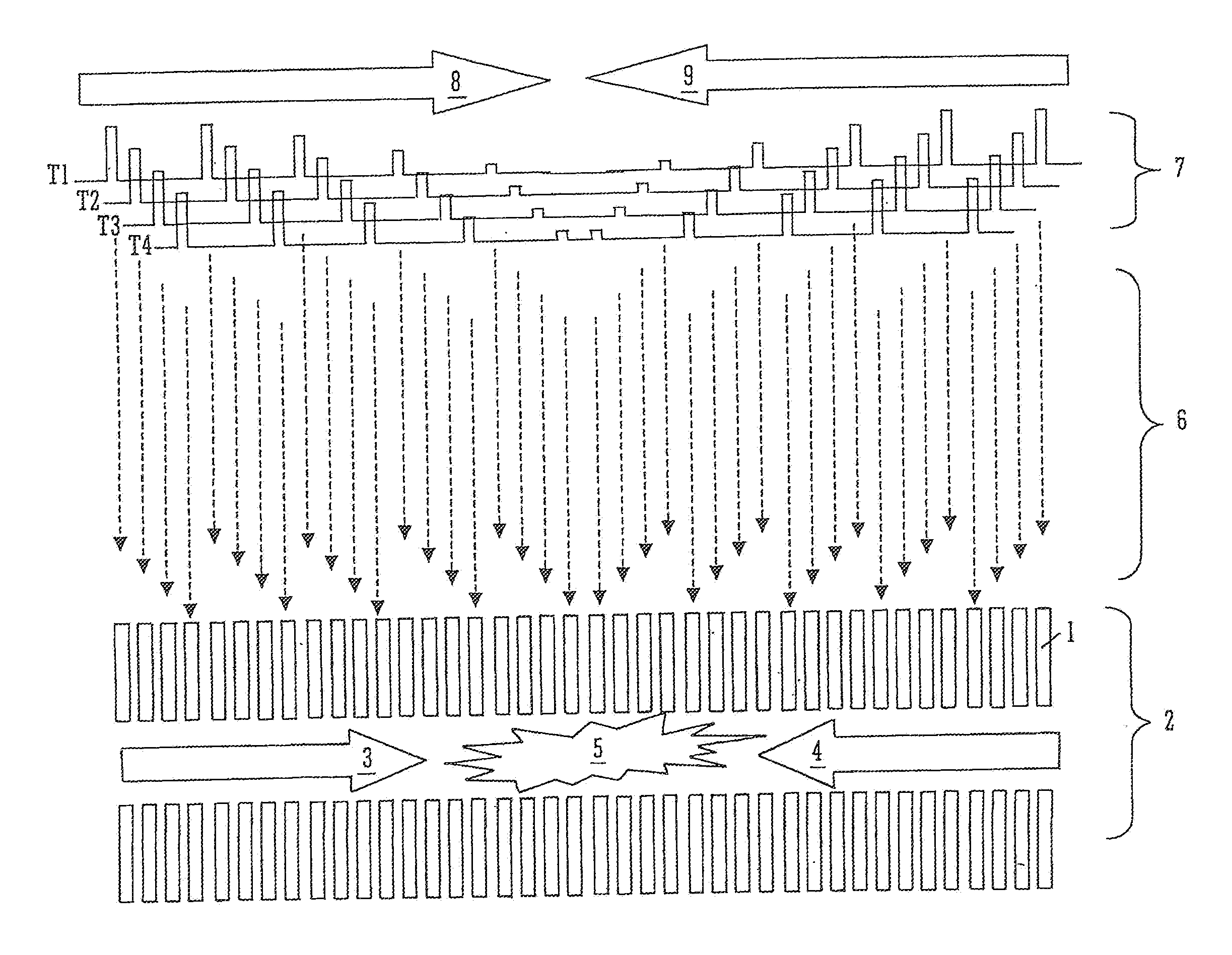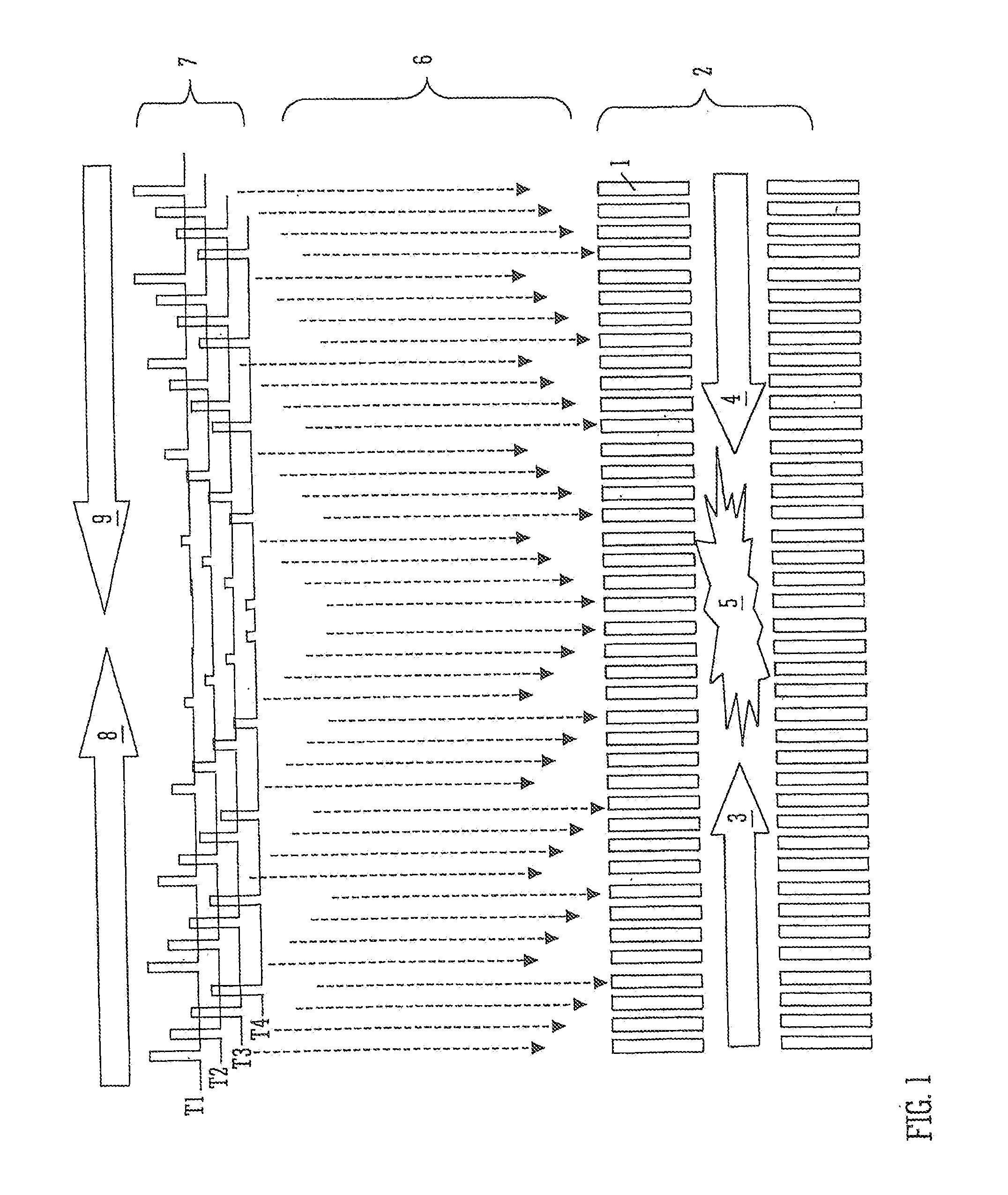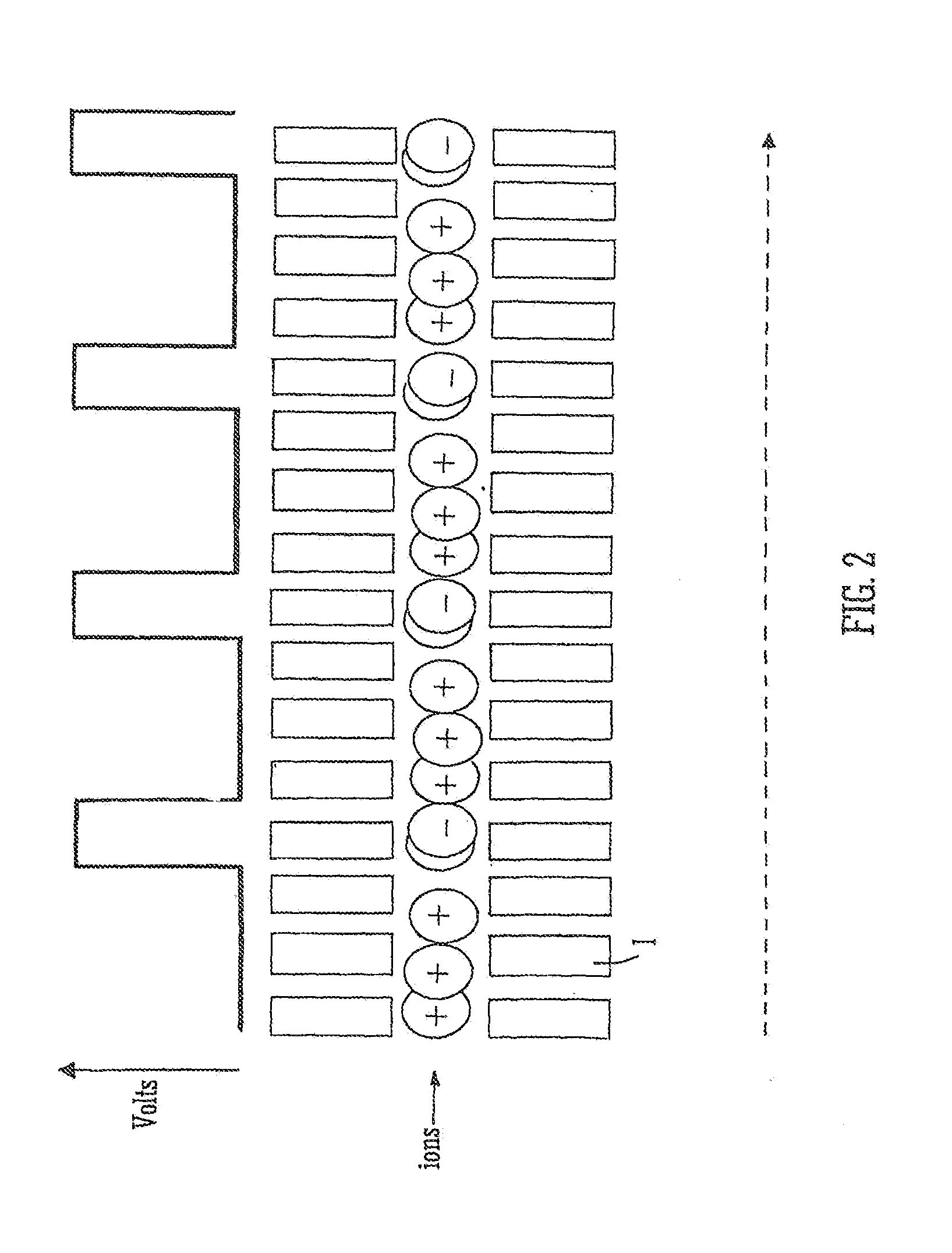Method of Charge Reduction of Electron Transfer Dissociation Product Ions
a technology of electron transfer dissociation and product ions, which is applied in the field of mass spectrometry and mass spectrometry, can solve the problems of prohibitively expensive mass spectrometers, difficult to know a priori the optimal parameters, and large mass spectrometers, etc., and achieves the effect of reducing the charge state of the product or fragment ions, simplifying and improving the quality of the resulting product or fragment ion mass spectral data
- Summary
- Abstract
- Description
- Claims
- Application Information
AI Technical Summary
Benefits of technology
Problems solved by technology
Method used
Image
Examples
Embodiment Construction
[0166]Although the present invention is primarily concerned with a PTR device comprising neutral reagent gas for reducing the charge state of ETD product or fragment ions, various aspects of an ETD device which is preferably arranged upstream of the preferred PTR device will first be described in order to explain how the ETD product or fragment ions are first generated.
[0167]FIG. 1 shows a cross sectional view of the lens elements or ring electrodes 1 which together form a stacked ring ion guide Electron Transfer Dissociation (“ETD”) device 2 which is preferably arranged upstream of a Proton Transfer Reaction (“PTR”) device comprising a neutral reagent gas according to the preferred embodiment of the present invention.
[0168]The ETD device 2 preferably comprises a plurality of electrodes 1 having one or more apertures through which ions are transmitted in use. A pattern or series of digital voltage pulses 7 is preferably applied to the electrodes 1 in use. The digital voltage pulses ...
PUM
 Login to View More
Login to View More Abstract
Description
Claims
Application Information
 Login to View More
Login to View More - R&D
- Intellectual Property
- Life Sciences
- Materials
- Tech Scout
- Unparalleled Data Quality
- Higher Quality Content
- 60% Fewer Hallucinations
Browse by: Latest US Patents, China's latest patents, Technical Efficacy Thesaurus, Application Domain, Technology Topic, Popular Technical Reports.
© 2025 PatSnap. All rights reserved.Legal|Privacy policy|Modern Slavery Act Transparency Statement|Sitemap|About US| Contact US: help@patsnap.com



